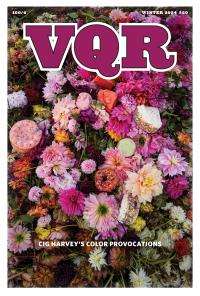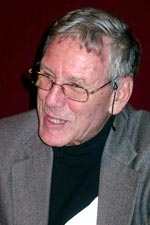
Amos Oz’s Seventieth Birthday

This week, Israeli writer Amos Oz celebrated his seventieth birthday. Often considered part of a band of co-generational greats that includes A.B. Yehoshua, Aharon Appelfeld, and the lesser-known Yoel Hoffmann, Oz is regularly touted as a Nobel candidate. He has published books of short stories, essays (political and otherwise), novels, numerous newspaper pieces, a masterful memoir that is a fine introduction to his work and to Mandate-era Palestine, fables, and even a novel-in-verse. Often associated with the Israeli left, Oz was a founding member of Peace Now and though he’s perhaps less vocal politically than he was in the nineties, he’s occasionally mentioned, like his younger compatriot David Grossman, as someone who could be a viable high-level candidate, should he ever seek public office.
His latest book published in English is Rhyming Life and Death, which has received generally positive reviews. There’s also a new anthology of his work, titled The Amos Oz Reader. And given the occasion, the seventieth birthday of a writer who has chronicled the state of Israel—and, it should be said, much else—since its inception, he has merited a fair number of retrospective pieces. These are a few:
- ”Dipping a Pen in the Inkwell of Life” (written, in fact, by A.B. Yehoshua)
- ”Generosity and restraint”
- ”Interview with Amos Oz”
- ”Amos Oz, Approaching 70, Sees Israel With a Bird’s-Eye View”
- ”The outsider”
I spent almost six months in 2007 and 2008 in Arad, the small town in the Negev desert that Oz has called home for many years. (I never got the chance to meet Oz, but someone pointed his house out to me from a distance—it looked like all the others—and a friend swore she saw him at a coffee shop at the only mall in town.) Arad is a strange place—a town of more than twenty thousand that often feels like one tenth that size, with only a few restaurants, carefully planned neighborhoods, no traffic lights, numerous parks for children, and hundreds of stray cats milling about, scavenging for food. At any given point, the open desert is no more than a five minute walk away, and at night, the fog rolls in, producing a beautifully eerie luminescence from the orange streetlights that dot every corner. Jackals can sometimes be heard calling in the distance. (Oz’s first book of fiction was called Where the Jackals Howl.)
It’s also one of Israel’s most diverse towns, filled with Jews of all manner of religiosity and ethnic extraction—Russians, Ethiopians, Indians, South Americans, Sabras—and many Bedouin, some of whom also live in the unrecognized communities that surround Arad. They live in dilapidated homes run on generators, and some subsist on raising sheep or camels that graze on the meager desert scrub. Occasionally, hiking around town, such as in the spot where Oz was photographed for the “Sees Israel with a Bird’s-Eye View” piece linked to above, one can encounter a Bedouin man or woman, sometimes a couple of children, quietly moving their flock along the rocky brown hills, trailed by a pair of lazy dogs.
This alluring place is neglected in writing about Israel, which usually revolves around Tel Aviv, Jerusalem, holy cities like Safed, the Occupied Territories, and the Diaspora. However, Oz frequently invokes Arad, especially on his occasional flights of meta-narrative, and it’s a welcome perspective. Unless they’re stopping through on their way to the nearby Dead Sea or Masada, few Israelis even bother to go to Arad—many asked me some version of, “Why would you ever want to go there, much less live there?”—but this small, humble town, too, is part of Israel, deeply representative of the desert, which informs so much of the area’s history. Oz’s descriptions of the place, littered throughout his work, serve as one more reason to turn to this great writer, who has much to tell us about where he comes from and where this country might be going.
